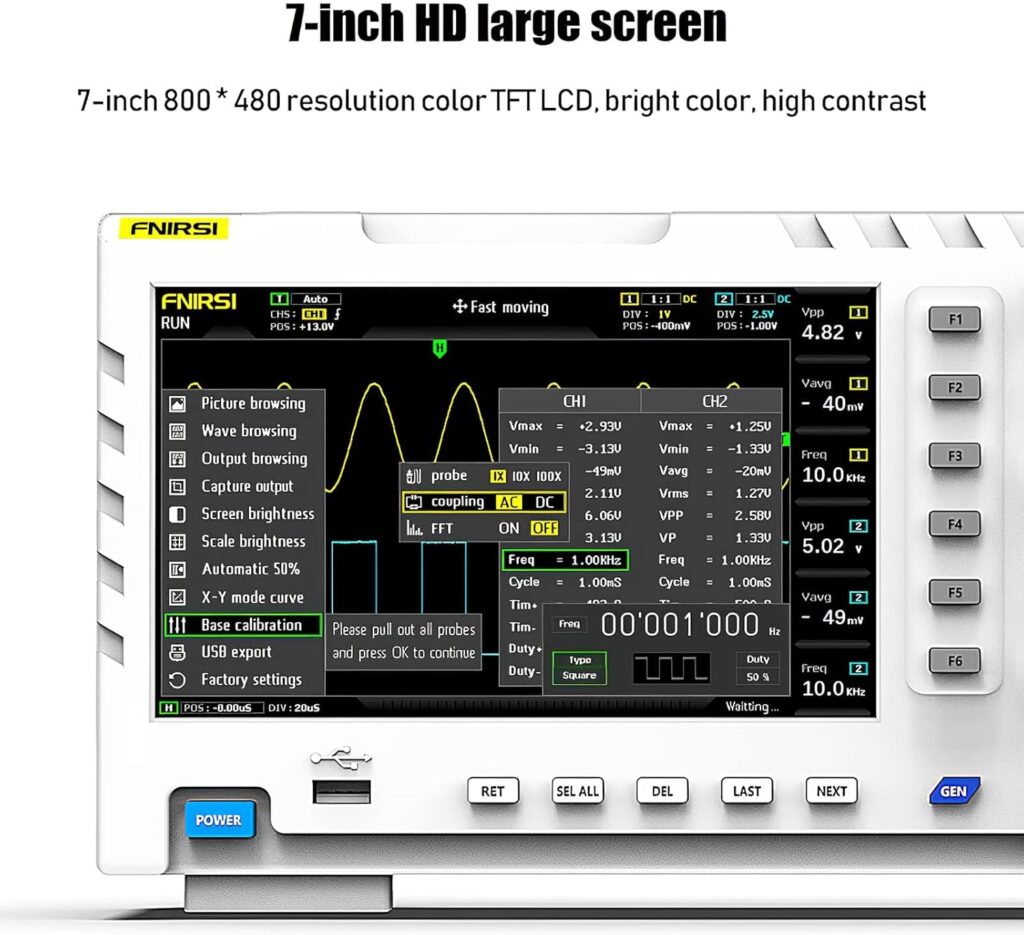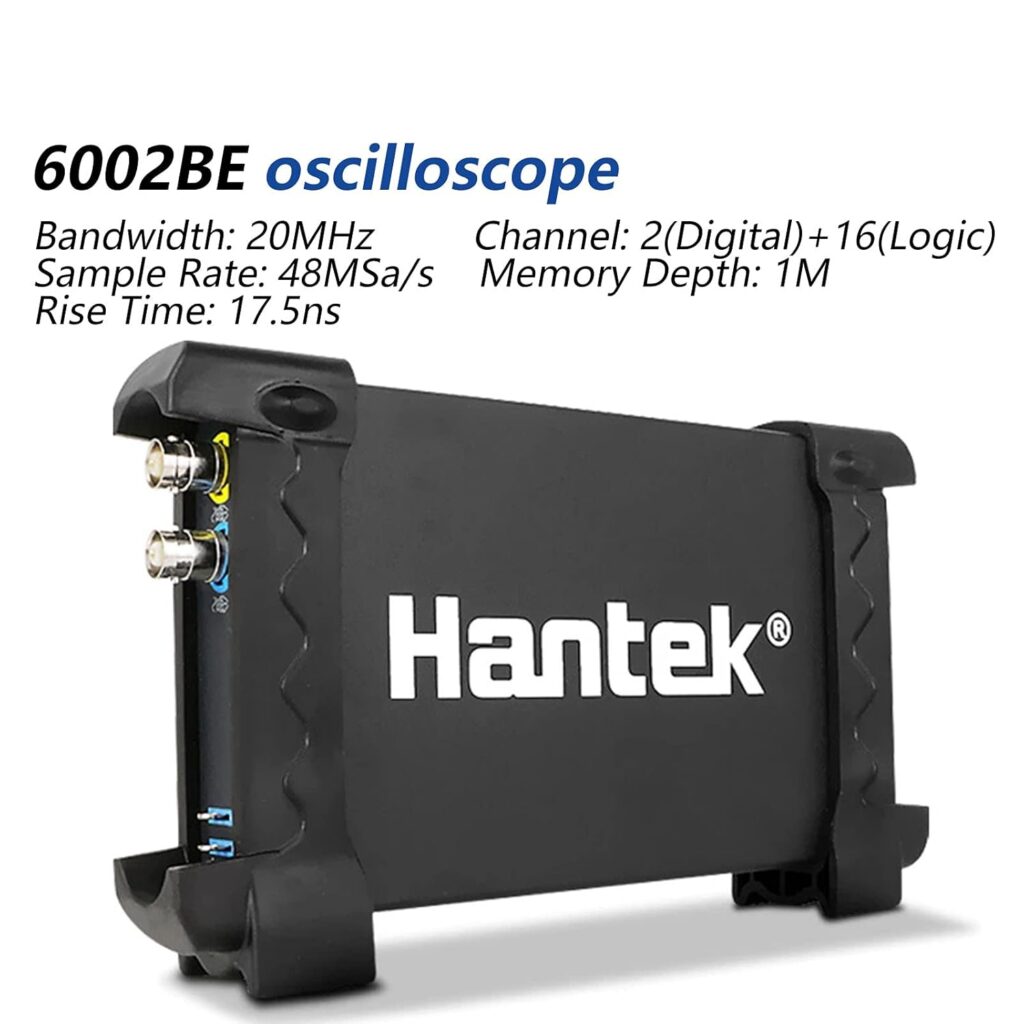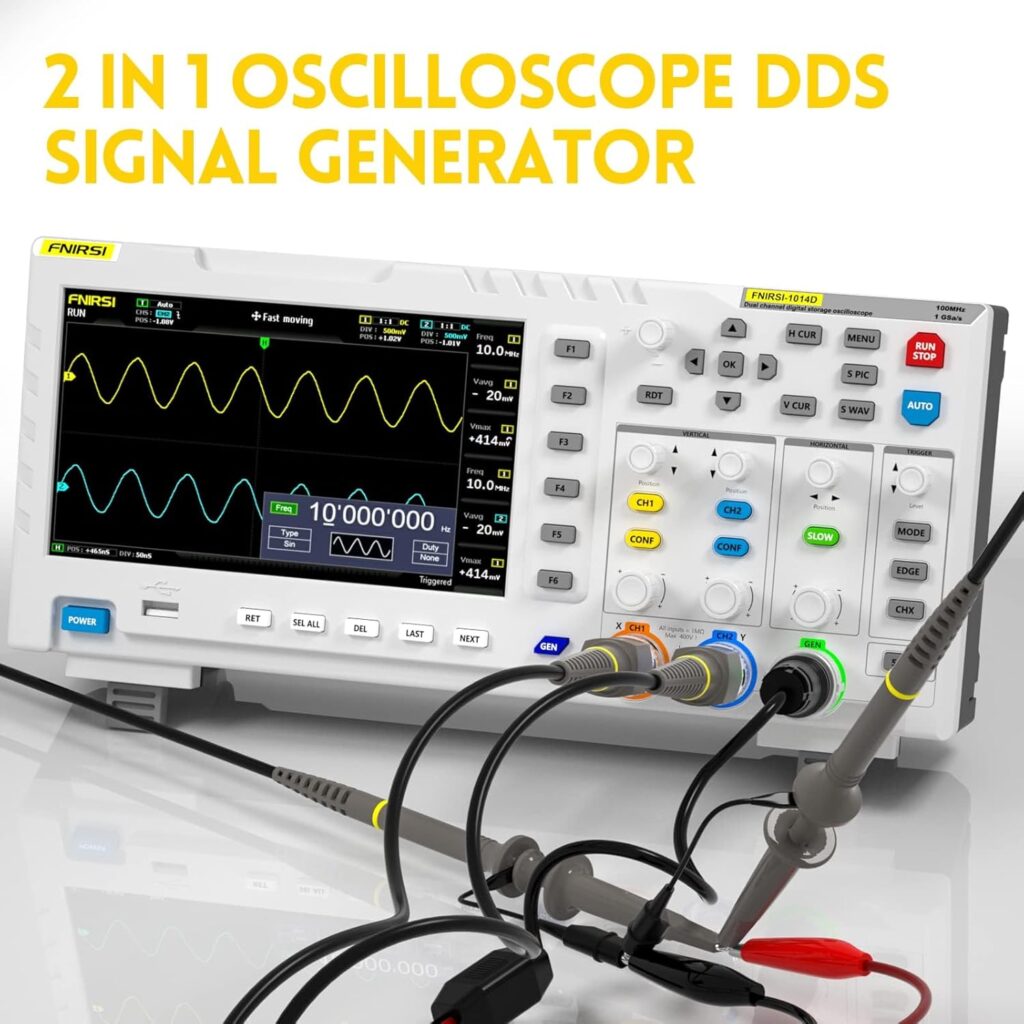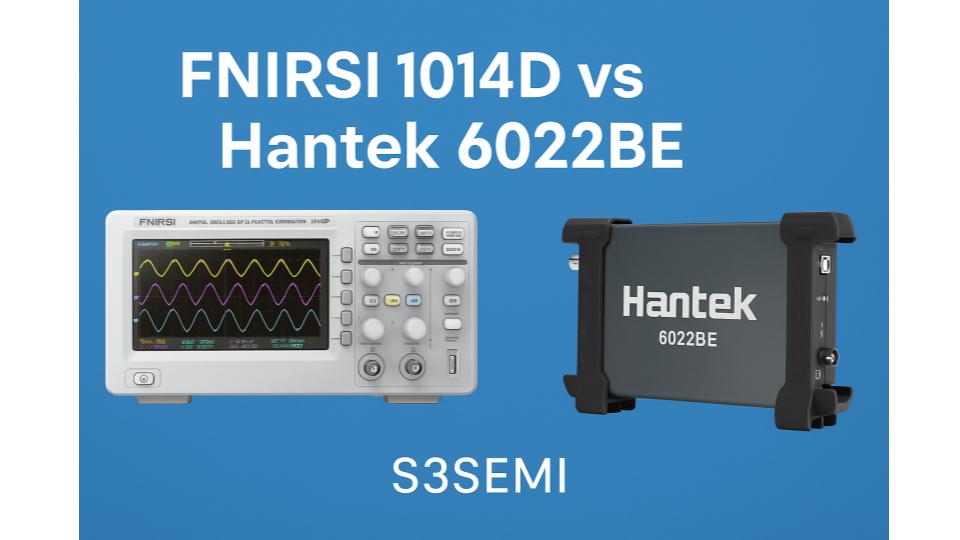The FNIRSI 1014D and the Hantek 6022BE both target budget-friendly oscilloscope buyers, but they serve very different kinds of users.

🏷️ Oscilloscope Deals ⭐⭐⭐⭐
The FNIRSI 1014D is a standalone 100 MHz digital oscilloscope with a built-in signal generator, while the Hantek 6022BE is a USB-powered PC oscilloscope with a modest ~20 MHz bandwidth.
Your choice depends on whether you want a true bench instrument or a simple PC-based tool for basic signal viewing.
📋 Key Specifications Side-by-Side
| Specification | FNIRSI 1014D | Hantek 6022BE |
|---|---|---|
| Channels | 2 | 2 |
| Bandwidth | 100 MHz | ~20 MHz |
| Max Sample Rate | 1 GSa/s (advertised) | ~48 MSa/s |
| Display | 7″ built-in | Computer monitor (PC required) |
| Memory Depth | 240 kbit class | ~1 MB class |
| Additional Features | Built-in signal generator, storage, screenshots | Low-cost basic functionality |
| Form Factor | Standalone | USB PC oscilloscope |
| 💳 Pricing | 💲Check Price | 💲Check Price |
✅ Strengths of Each
FNIRSI 1014D

- Much higher bandwidth (100 MHz) suitable for faster digital edges, switching regulators, and more advanced analog circuits
- Standalone instrument with a built-in display
- Integrated signal generator useful for fast testing and waveform injection
- Convenient saving options (screenshots, waveform storage)
- Good all-rounder for electronics hobbyists, DIY labs, and repair work
Hantek 6022BE

- Extremely budget-friendly, ideal for new learners
- Very compact and portable since it’s USB-powered
- Works with your computer screen, which means large display and easy screenshot capture
- Good for simple waveforms like audio, sensors, and hobby-level digital signals
- Popular for educational use and basic lab tasks
⚠️ Limitations to Consider
FNIRSI 1014D

- Some of its claimed specifications (like 1 GSa/s) may not match the performance of branded professional scopes
- As a 2-in-1 device, the signal generator is basic compared to standalone generators
- Not ideal for highly accurate or professional laboratory measurements
Hantek 6022BE

- Bandwidth is very limited (~20 MHz), making it unsuitable for any moderately fast digital or switching signals
- Sampling rate is low, reducing detail in waveforms
- Relies completely on a PC and software, which may not be as stable or polished
- Not suitable for serious electronics development or power electronics debugging

🎛 Use-Case Guidance
Choose the FNIRSI 1014D if you:
- Want a real standalone oscilloscope
- Work with medium-speed analog and digital circuits
- Want a built-in waveform generator
- Need portability without relying on a laptop
- Prefer a full-featured instrument without requiring additional software
Choose the Hantek 6022BE if you:
- Need a very low-cost entry-level oscilloscope
- Only work with slow signals: audio, sensors, simple microcontroller outputs
- Don’t mind running scope software on a PC
- Prefer something ultra-portable and simple
- Want a cheap second scope for quick checks
🔍 Final Recommendation
For most electronics users, especially those working with digital systems, switching supplies, or general circuit debugging, the FNIRSI 1014D is the far more capable tool.
Choose the Hantek 6022BE only if you’re on a very tight budget or need a simple USB oscilloscope for low-speed educational tasks.

